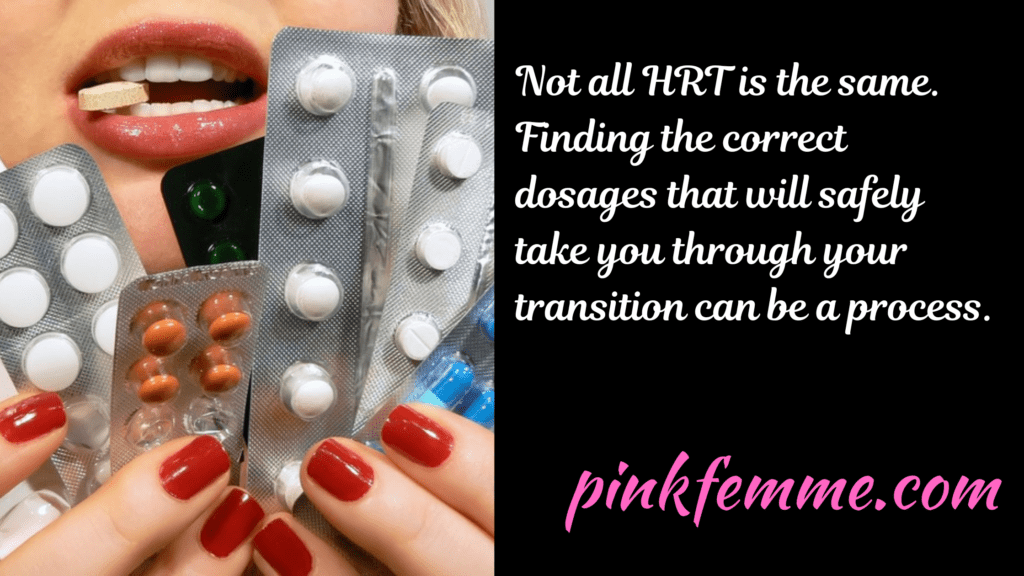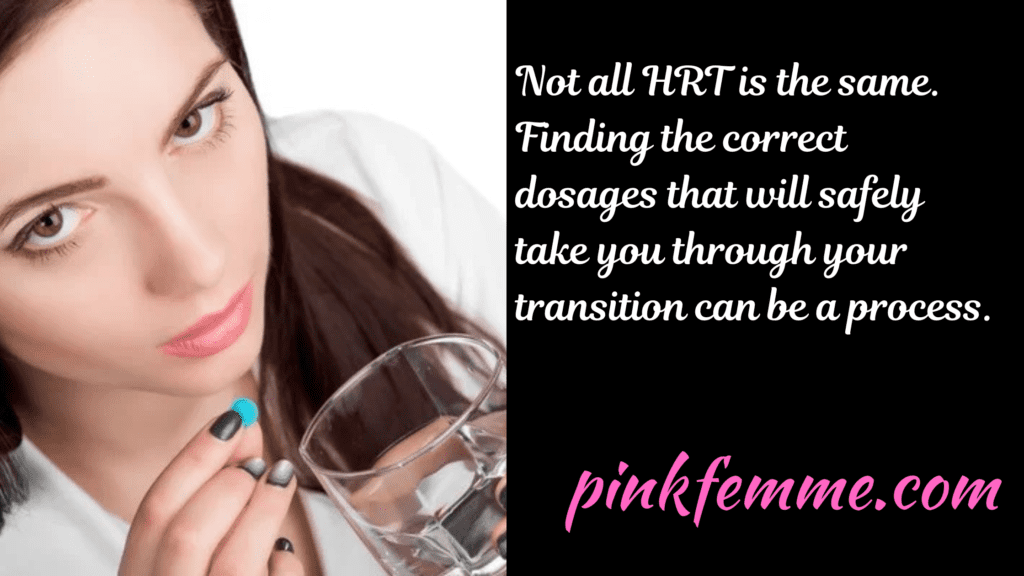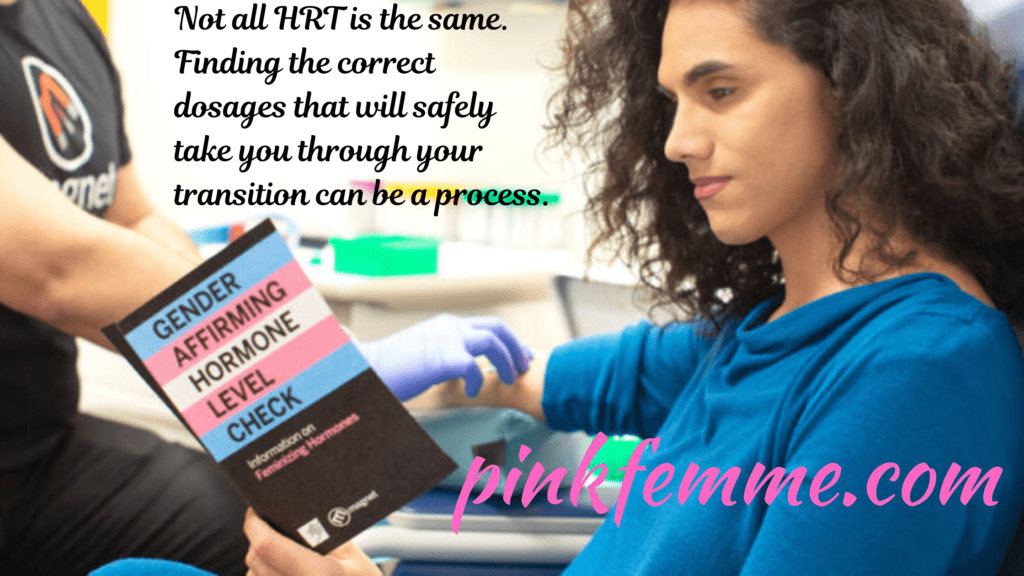
I have received messages from girls wanting to learn more about what to expect when going onto HRT. I have always believed that this kind of content will be even more valuable if it comes from a girl who has been on HRT and can speak from personal experience.
This is the first part of a three-part series of articles on HRT. This article deals with the rollercoaster of how Sixteen found the type and dosage of HRT that worked best for her. Part two will deal with the physical changes on HRT, while the final installment will deal with mental/emotional changes brought about after a full year on HRT.
Do let me know if this kind of guest post from a girl going through a similar process to you is something that you would like to see more of. Perhaps you are a girl that feels you can share an experience that will help other girls that are just starting out. Hugs
This post was written by the talented Sixteen and was originally posted as a profile/journal update. It is reproduced here with her kind permission. Be sure to check out more about Sixteen at the end of this post and give her some Pink Femme love if you have access to her profile.
Towards the end of April 2021, I made one of the most impactful decisions of my life: I decided to transition from male to female. After much consideration about what that meant to me, I started undergoing hormone replacement therapy (HRT) at the end of the following month. It’s about a year later now, so I thought it would be a good time to reflect upon the experience and see how my life has changed.
Before we go into the changes I experienced, I’m going to need to explain the actual hormone side of things first. At the risk of oversimplification, feminizing HRT consists of two parts: increasing estrogen levels, and decreasing testosterone levels. In my case, that meant I took cyproterone tablets and oestradiol patches. I was originally taking a quarter tablet of cypro once a day, and applying one of the patches twice a week. The oestradiol patches have been slowly doing their thing over the year, and I’m currently at about triple the dose I started at. My experience with cyproterone, on the other hand, has been far more interesting.

One of the quirks of HRT is that the effects of the medication can vary wildly between people, which means that one’s dosage may need to be personalized quite substantially from the default. When I started, my T levels were at 17.5 nmol/L, which is well within the standard male range of 10-35 nmol/L. After two months of a quarter tablet of cypro a day, I dropped down to just 0.5 nmol/L. Given that the standard female range was 0.5-2.4 nmol/L, we were within the desired range, if slightly low, so we cut the dosage down to a quarter four times a week and waited.
Two months later, the bloods come back. 0.2 nmol/L. My testosterone had continued to drop. This was obviously undesirable, so we cut down on the T blockers to just twice a week to bring it back up a bit. Two more months and I now read as <0.1 nmol/L, the lowest possible reading the blood tests could give. What the heck. Clearly, something had to change.
To make sure that everything was actually okay, we stopped the cyproterone for three months and had another look, which showed 16.1 nmol/L. My body was clearly still capable of producing testosterone, I seemed to just respond extremely well to the cyproterone. Once again we started but on the far lower dosage of a quarter tablet twice a week. Three months later, I was once again at <0.1 nmol/L.
My doctor and I were both quite baffled at this result. I had somehow accomplished what had previously taken six months in just three, despite being on a lower dosage. I can only assume that my body is extremely good at not producing testosterone when asked. It’s kind of wild. I’m now down to a quarter tablet just once a week, and I’m awaiting the next set of bloods in about a month.

Long term, this is probably a good thing for me. Cyproterone can have some nasty side effects such as liver damage, so the less I have to take, the less likely those are to crop up. In the short term though, it’s meant that I’ve spent over a year failing to find the right balance of hormones, my body constantly having to readjust to find that equilibrium. It’s basically a second puberty (twoberty, if you will). In addition, such low levels of testosterone can have serious effects, having a strong association with depressive moods and fatigue. This all contributed to the last year being something of a rollercoaster, speeding between ups and downs outside of the passenger’s control.
Despite all of this hassle, I absolutely think this was one of the best decisions I have ever made. However, this writing is already starting to balloon, so I’ll finish it off in separate posts next weekend where I’ll explain all of the physical and mental changes that have happened as a result of transitioning and why this has been so impactful to me. Until then!
Sixteen is a young lady going through her process of transition. As she said to me: “The more resources and lived experiences available to those just starting their own journeys, the better.” The “writings” part of her profile on this platform is where this article was first published and where you can read more from this highly creative girl living her authentic life. If you are also on that platform, go and give her writing some Pink Femme love.
If you are new to Pink Femme, be sure to check out the unique 40 Steps To Femme program that will help you to feel more girly one delicate step at a time.

2 thoughts on “One Year On HRT: My Medical Rollercoaster”